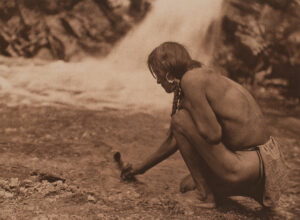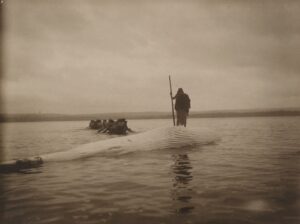Edward S. Curtis
American, 1868—1952
About
Edward S. Curtis
American, 1868—1952
Beginning in 1900 and continuing over the next thirty years, Edward Sheriff Curtis, or the “Shadow Catcher,” as he became known to some Native American tribes, photographed and documented the lives and traditions of the Native peoples of North America. After moving West as a teenager, in 1892 Curtis opened a successful portrait studio. Always an outdoorsman, by the mid-1890s Curtis had begun photographing the local Native Americans of Puget Sound, and at the National Photographic Convention of 1899, won grand prize for three of his soft-focused, sepia-toned images of the native people digging for clams and mussels. The same year, Edward Curtis participated in the Harriman expedition to Alaska as one of two official photographers, and the following year, at the invitation of the editor of Field and Stream magazine, photographed the Blackfeet Indian people in Montana. Curtis’ life work, a 20-volume magnum opus titled The North American Indian, was published in 1930, winning the support of such prominent figures as President Theodore Roosevelt and J. Pierpont Morgan, and hailed by The New York Herald as “the most gigantic undertaking since the making of the King James edition of the Bible.” Curtis envisioned the project as a scholarly and artistic work to document the daily life and landscape of the disappearing Native American tribes west of the Mississippi. Curtis took over 40,000 images of 80 tribes for the project, made recordings of Indian languages and music, and wrote descriptions of mythologies, history and traditions. Curtis’ luminous images—including iconic portraits, reenactments of battles and ceremonies, and other vignettes from daily life—had a profound impact on the national imagination at the time, and continue to shape the way we see Native American life and culture.

